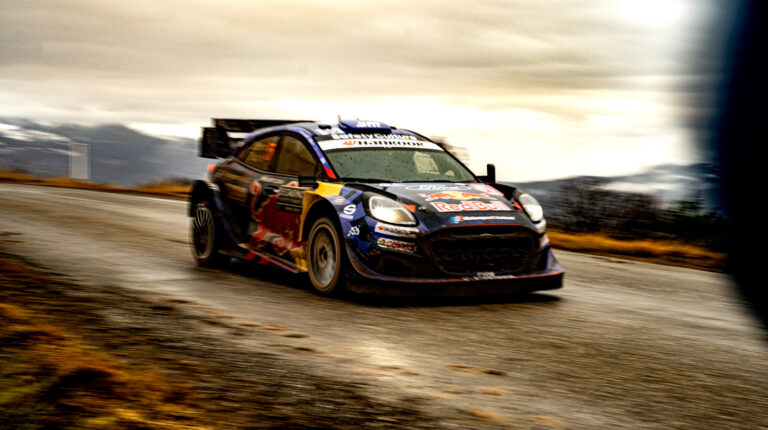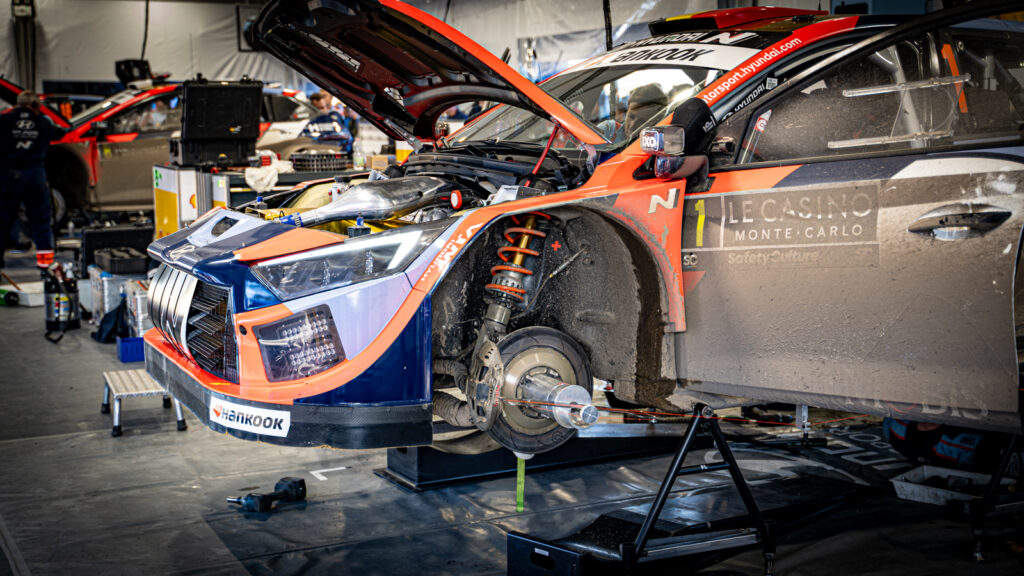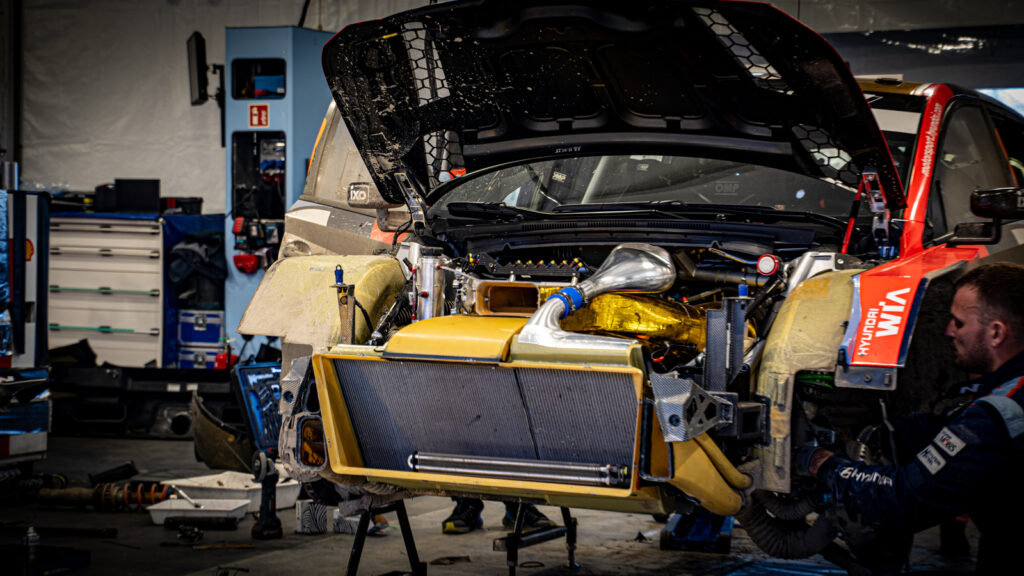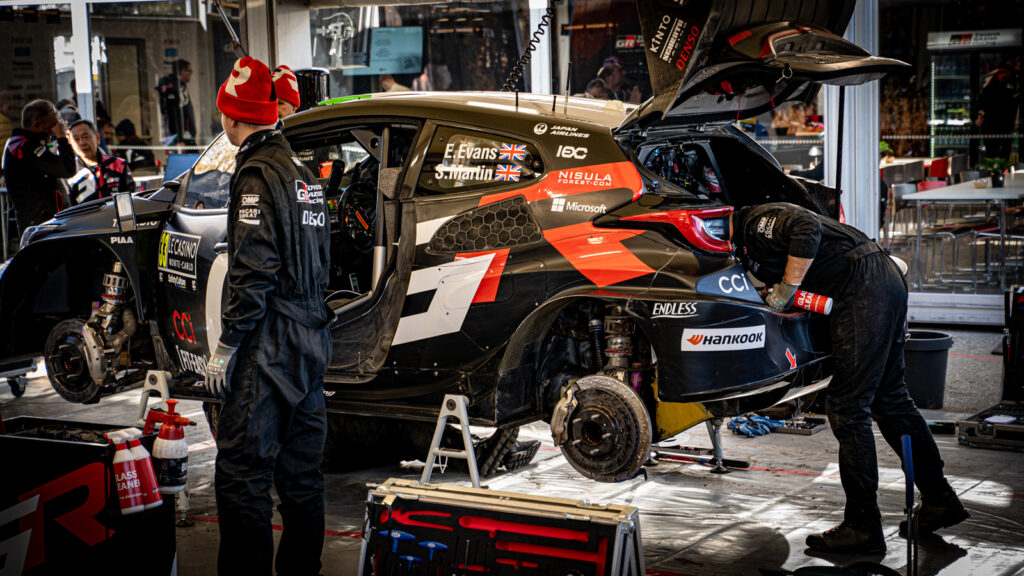Last year was a topsy turvy one for the works manufacturers in Rally1, with regulation changes that flip-flopped seemingly at the FIA’s whim keeping teams guessing when it came to their short-term and longer-term development plans.
The FIA seemed to be in crisis about what to do with the WRC. How could such a compelling spectacle be under delivering and failing to attract new manufacturers? In what could be seen as a misguided move, they asked the fans for their opinions. The WRC Commission delivered a report early in 2024, headed by FIA deputy president for sport Robert Reid and WMSC member David Richard, and from this stemmed a series of proposed changes for the top class, all aimed at cutting costs.
In the near-term, the troublesome hybrid units would be ditched in 2025 and in 2026 both current and new specification WRC cars would run alongside each other. The new spec cars would retain the basic Rally1 car chassis but with greater bodywork freedom. However, Rally2 units would be used instead of the current bespoke engines. A target price of €400,000 (US$440,000) per car was set. At the same time, a ‘WRC Upgrade’ kit was introduced for current Rally2 machines intended to reduce the performance gap between the two classes.
Then, come June, following a meeting of the World Motor Sport Council (WMSC), it was revealed that hybrid would be retained for 2025, a decision that seemed to be welcomed by the manufacturers. But that wasn’t the end of the matter. In September, the hybrid system supplier, Compact Dynamics, issued a directive that if a system were to suffer three shocks over 15g, or one over 25g, it would need to be removed from the car and returned for a service. This understandably raised concerns with teams around both availability of serviceable units and the considerable added cost – which could, as M-Sport’s Chris Williams noted, amount to several millions more per year.
In late November, the FIA, following another meeting of the WMSC, announced that the hybrids would be ditched after all, with an ensuing reduction in minimum weight of the cars (1,180kg, down from 1,260kg) and a change to the engine restrictor (reduced by 1mm to 35mm) to account for the lower vehicle weight. The rules around changing some parameters for engine calibration – previously linked to the hybrid and thus restricted – were also eased.
Implications of cutting hybrid
While for some, such as M-Sport, the removal of the hybrid likely came as something of a relief. For others, including Toyota, there was a different calculus; having invested both time and money in the development of its car around the hybrid, it didn’t want that work to go to waste. Highlighting this predicament was the fact that Toyota had to shelve a redevelopment of the rear transmission and suspension for the GR Yaris, intended to better optimize the hybrid installation. The update was ready to deploy but was rendered obsolete.
Although the hybrid system was far from perfect, the teams had learned how to deal with it. As Toyota Gazoo Racing’s Tom Fowler explained at Rally Monte Carlo, “Over the three seasons that we ran the system, the reliability did improve, both from the side of the stock part that we received and our understanding of how to treat it and our expectation on what we can take from it. By the end, we had the hybrid system working something like 90% of the time on stage kilometers.
“In the beginning, that percentage was a lot lower, so we always had in mind that the car needs to work without it. This meant that the number of things we had to relearn, or redo [for 2025] was quite limited because we already had it as a backup plan anyway.”
Recalibration
For Toyota and the other teams, the removal of the hybrid necessitated a reassessment of its engine tuning. In 2024, Toyota had focused on increasing the top-end power of the Yaris. With hybrid energy deployment limited, it had found the greatest benefits came from deploying at lower speeds to improve drive out of a corner. It had therefore focused its engine development on top-end power. However, with the removal of the hybrid, low-end torque was once again required, and was addressed with a revised camshaft and exhaust system specification, introduced via the joker system at the start of the season.
Fowler noted that one implication of the removal of hybrid was greater freedom when it came to engine mapping as the areas that teams were allowed to play with during the hybrid era were quite tightly controlled: “If you had a hybrid system which was reactive to what the engine was doing, you would end up spending a lot on development, so a large area of the software on the engine side was frozen. Now those areas have been unfrozen, we have been able to retune the engines using normal calibration techniques which would not necessarily have been possible before.”
With regulation stability, at least for the next two years, the works manufacturers in WRC can turn their attentions to 2027. Though the regulations are yet to be finalized, Fowler said that the areas that have been confirmed cover some of the larger, long lead time items and elements which dictate overall car architecture: “It’s been quite cleverly done and covers most of the things you design first. We know what the transmission is going to be like, we know what the engine is going to be like. So, in a sense, the package we already have is enough to get started, and it is areas like some of the body and the safety requirements which are still subject to some calculations by the FIA.”
However, questions remain around whether there will be any other manufacturers beyond Toyota to actually build cars to the new regs, with both Hyundai and M-Sport Ford’s participation far from certain, even before the current global financial turmoil got going.






